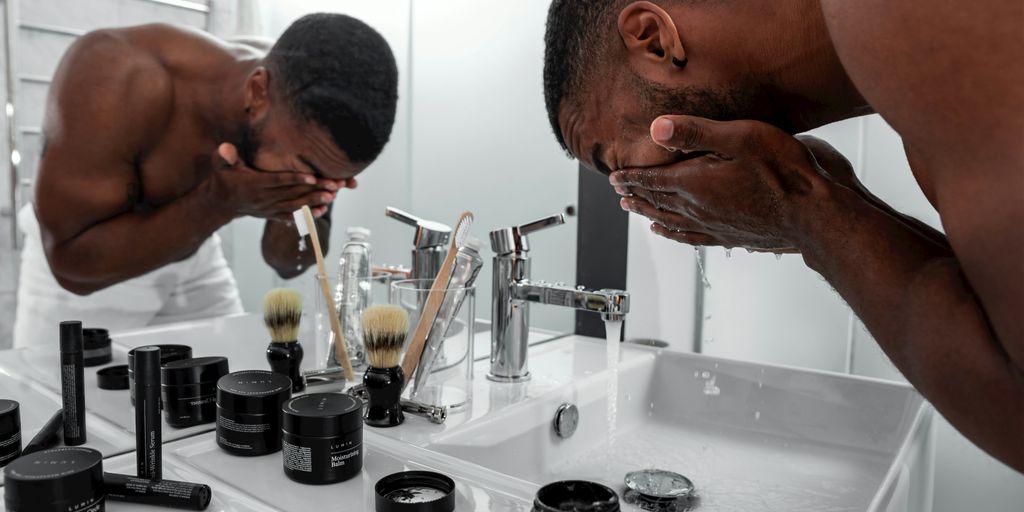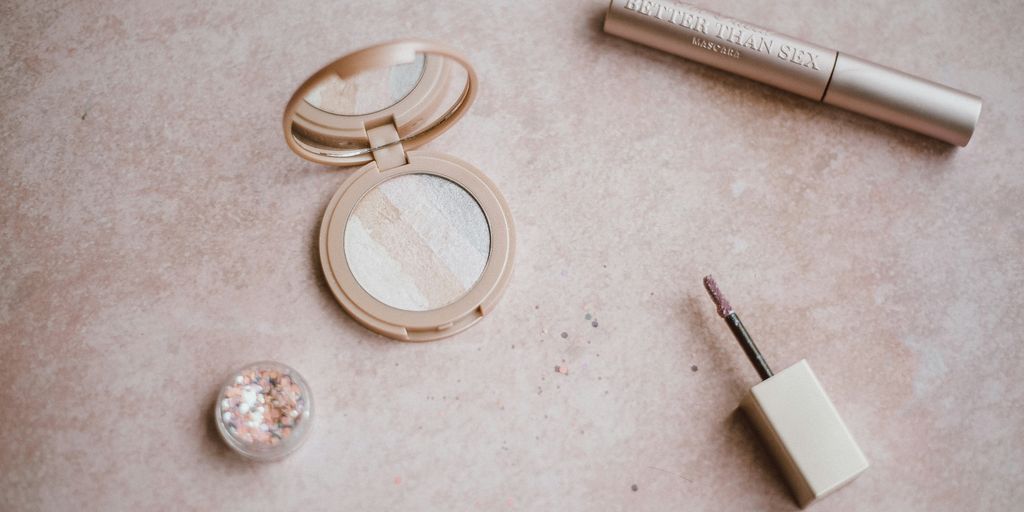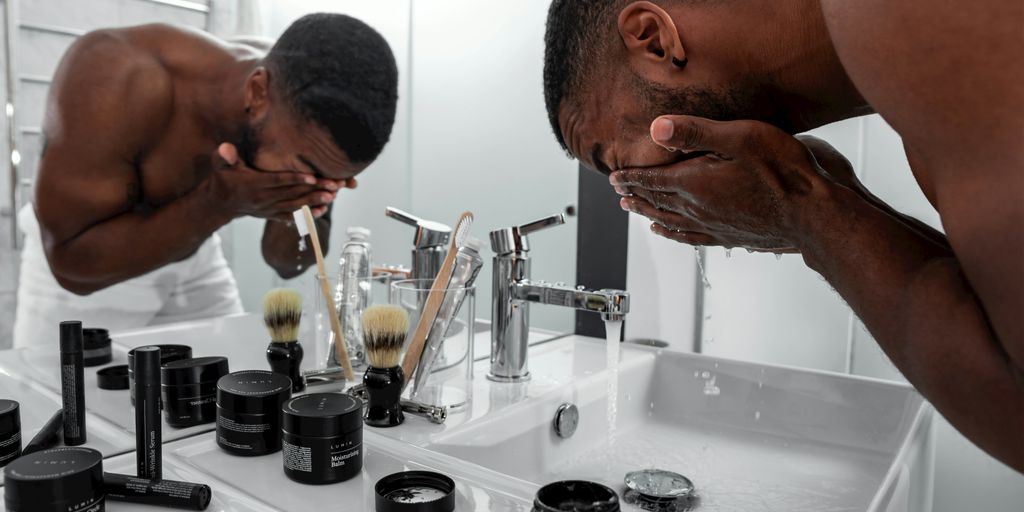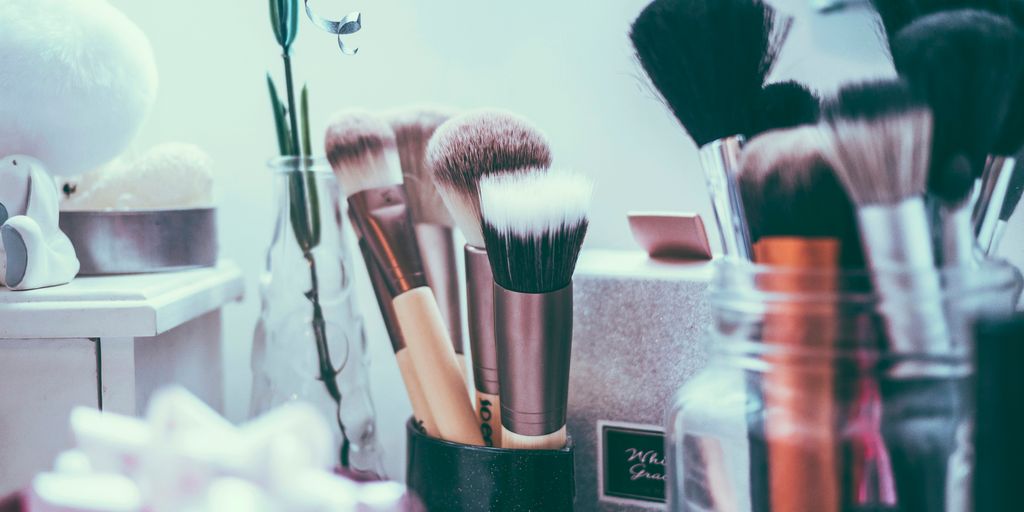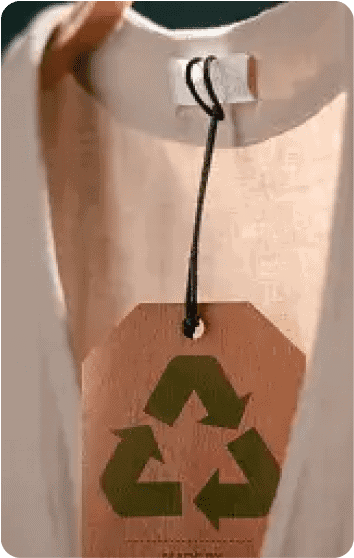In recent years, consumers have become increasingly aware of the ethical implications of their beauty products. This has led many to ask, “Is Dove cruelty free?” As we step into 2025, Dove’s commitment to ethical beauty is under scrutiny. In this article, we’ll explore Dove’s animal testing policies, their sourcing practices, and how they stack up against competitors in the beauty industry.
Key Takeaways
- Dove claims to be cruelty free, but it’s essential to understand their testing policies.
- The brand focuses on ingredient transparency and sustainable sourcing.
- Consumer perceptions of Dove’s ethics are mixed, influenced by social media and influencers.
- Dove is making strides in environmental initiatives, like sustainable packaging and carbon footprint reduction.
- The beauty industry faces challenges like greenwashing and balancing profit with ethical practices.
Understanding Dove’s Cruelty-Free Status

What Does Cruelty-Free Mean?
Okay, so what does "cruelty-free" actually mean? It’s a term thrown around a lot, but it’s important to understand what it signifies in the beauty world. Generally, it means that a product wasn’t tested on animals at any stage of its development. This includes the ingredients, the manufacturing process, and the final product itself. However, the definition can get a little murky, as some companies might outsource testing to third parties or sell their products in countries where animal testing is required by law.
It’s not always as straightforward as a simple label. Consumers need to be aware of the nuances and potential loopholes.
Here are some key aspects of what cruelty-free should encompass:
- No animal testing of ingredients
- No animal testing during product development
- No animal testing of finished products
Dove’s Animal Testing Policies
Dove has made some pretty big claims about its commitment to being cruelty-free, and it’s worth taking a closer look at what that actually means. Dove states that it does not test its products on animals anywhere in the world. This is a pretty strong statement, but it’s important to see how it holds up under scrutiny. They’ve partnered with organizations like PETA to get certified, which adds another layer of trust. However, it’s always a good idea to stay informed and keep an eye on any changes in their policies.
Third-Party Certifications and Their Importance
Third-party certifications are super important when it comes to determining if a brand is truly cruelty-free. These certifications come from independent organizations that audit a company’s practices to make sure they align with cruelty-free standards. Leaping Bunny and PETA’s Beauty Without Bunnies are two of the most well-known and respected certifications.
Here’s why these certifications matter:
- They provide an unbiased assessment of a company’s animal testing policies.
- They require companies to undergo regular audits to ensure compliance.
- They offer consumers a reliable way to identify cruelty-free products.
It’s good that Dove has partnered with PETA, but it’s always a good idea to check which certifications a brand has and what those certifications actually entail. It adds an extra layer of confidence when you’re trying to make ethical choices.
Dove’s Commitment to Ethical Sourcing
It’s easy to focus on whether a product is tested on animals, but ethical beauty goes deeper. It also includes how a company sources its ingredients and how it treats the people and communities involved. Dove has made some strides in this area, but there’s always room to improve. Let’s take a look at what they’re doing and where they could do better.
Ingredient Transparency
Dove claims to be working towards greater transparency in its supply chain, but what does that really mean? It means being open about where their ingredients come from and how they’re processed. Consumers are increasingly demanding to know exactly what they’re putting on their skin, and Dove is trying to respond. However, it can be difficult to trace every ingredient back to its source, especially when dealing with complex formulations and global supply chains.
- Publishing a list of all ingredients used in their products.
- Providing information about the origin of key ingredients.
- Sharing details about the environmental impact of ingredient sourcing.
Sustainable Sourcing Practices
Sustainable sourcing is about ensuring that ingredients are obtained in a way that doesn’t harm the environment or exploit workers. Dove has stated commitments to sustainable palm oil, for example, but it’s important to look beyond the surface. Are they truly preventing deforestation and protecting biodiversity? Are workers being paid fair wages and treated with respect? These are the questions consumers should be asking.
It’s not enough to simply say you’re committed to sustainability. Companies need to show concrete evidence of their efforts, including independent audits and certifications. Otherwise, it’s just empty words.
Impact on Local Communities
Ethical sourcing also means considering the impact on local communities where ingredients are sourced. Does Dove’s presence benefit these communities, or does it contribute to problems like land grabbing or displacement? It’s important to support companies that prioritize the well-being of the people who help create their products.
Here’s a few things to consider:
- Supporting community development projects.
- Ensuring fair wages and working conditions.
- Respecting local cultures and traditions.
Consumer Perception of Dove’s Ethics
Public Reactions to Dove’s Claims
How does the public really feel about Dove’s ethical claims? It’s a mixed bag, honestly. Some people are all in, trusting the brand because of its long history and familiar presence. Others are more skeptical, especially with so much greenwashing going on in the beauty world. It’s hard to know who to trust these days, right?
- Loyal customers often praise Dove for its commitment to real beauty and body positivity.
- Critics point to the brand’s parent company, Unilever, and question whether Dove’s ethics are truly independent.
- Social media sentiment analysis shows a pretty even split between positive and neutral opinions, with a smaller percentage expressing outright distrust.
It seems like people want to believe in Dove, but they also want more transparency and proof to back up the claims. The beauty industry is full of promises, and consumers are getting smarter about spotting what’s real and what’s just marketing.
The Role of Social Media
Social media is a huge factor in shaping how people see Dove’s ethics. A single viral post can make or break a brand’s reputation. Dove uses social media to promote its ethical initiatives, but it also opens the door for scrutiny and debate.
- Influencers play a big role in shaping opinions (more on that below).
- Consumers use social media to share their experiences, both good and bad.
- Dove actively engages with comments and concerns, but it’s a constant balancing act.
Influencer Opinions on Ethical Beauty
Influencers can have a big impact on whether consumers trust a brand’s ethical claims. If a popular influencer vouches for Dove, it can sway a lot of opinions. But if an influencer calls out the brand for inconsistencies, it can do serious damage.
- Some influencers partner with Dove to promote its ethical initiatives.
- Others remain neutral, offering their honest opinions without taking sides.
- A growing number of influencers are focusing specifically on ethical and sustainable beauty, holding brands accountable for their claims.
Here’s a quick look at how influencer marketing can affect consumer perception:
| Influencer Stance | Potential Impact |
|---|---|
| Positive | Increased trust, higher sales |
| Neutral | Balanced perspective, cautious optimism |
| Negative | Decreased trust, potential boycott |
Dove’s Environmental Initiatives
Dove has started making some real moves when it comes to helping the planet. It’s not just about looking good, but doing good too. They’re trying to cut down on waste and be more responsible with resources. It’s a journey, and they’re not perfect, but it’s good to see them trying.
Sustainable Packaging Efforts
Dove is working on making its packaging more eco-friendly. They’re aiming to use less plastic and more recycled materials. It’s a big challenge, especially with products that need to stay fresh and protected. They’ve started using bottles made from recycled plastic, and they’re exploring refill options for some products. It’s a start, but there’s still a ways to go to completely ditch single-use plastics.
Carbon Footprint Reduction
Reducing their carbon footprint is another area Dove is focusing on. This means looking at everything from how they make their products to how they ship them. They’re trying to use more renewable energy in their factories and find ways to transport goods more efficiently. It’s a complex issue, but every little bit helps. Here are some of the ways they are trying to reduce their carbon footprint:
- Investing in renewable energy sources for manufacturing.
- Optimizing transportation routes to minimize fuel consumption.
- Sourcing ingredients locally to reduce shipping distances.
Water Conservation Practices
Water is a precious resource, and Dove is trying to use it more responsibly. They’re working on reducing water usage in their manufacturing processes and promoting water conservation among consumers. This includes developing products that require less water to rinse off and supporting water conservation projects in communities where they operate. It’s all about being mindful of how much water we use and finding ways to use less.
Dove’s commitment to water conservation extends beyond their own operations. They actively support initiatives that provide access to clean water and promote responsible water management in water-stressed regions. This holistic approach demonstrates a genuine concern for the well-being of communities and the environment.
Comparing Dove to Other Brands
How Does Dove Stack Up Against Competitors?
When we consider Dove’s position in the beauty market, it’s interesting to see how it measures up against other brands, especially in terms of ethical practices. Dove has made significant strides in cruelty-free certification and sustainable sourcing, but some competitors have gone even further. For example, some smaller, independent brands focus exclusively on vegan and zero-waste products, setting a high bar for environmental responsibility. Dove, while widely available and relatively affordable, sometimes faces scrutiny regarding the complete transparency of its supply chain compared to these niche brands.
The Rise of Vegan Beauty Brands
Vegan beauty is more than just a trend; it’s a growing movement. These brands avoid all animal-derived ingredients and often prioritize ethical sourcing and sustainable packaging. This creates a unique appeal for consumers who are deeply concerned about animal welfare and environmental impact. Here are a few things that set them apart:
- Commitment to using plant-based alternatives.
- Emphasis on minimal and recyclable packaging.
- Transparency in ingredient sourcing and manufacturing processes.
The rise of vegan beauty brands is forcing larger companies like Dove to re-evaluate their practices and consider how they can better align with these values. It’s not just about being cruelty-free anymore; it’s about a holistic approach to ethical beauty.
Consumer Preferences in Ethical Beauty
Consumer preferences are constantly evolving, and ethical considerations are playing an increasingly important role in purchasing decisions. People are no longer just looking for effective products; they want to support brands that share their values. This shift is driving demand for:
- Products with clear and transparent labeling.
- Brands that actively support social and environmental causes.
- Sustainable and eco-friendly packaging options.
It’s a complex landscape, and consumers are becoming more savvy at spotting greenwashing. Brands like Dove need to continually demonstrate their commitment to ethical practices to maintain consumer trust and loyalty. It’s not enough to simply claim to be ethical; they need to provide evidence and be transparent about their practices.
Challenges in the Beauty Industry
Greenwashing: What to Watch For
It’s easy to get caught up in marketing, but greenwashing is a real problem. Companies sometimes exaggerate their environmental efforts to appear more ethical than they are. Look beyond the surface claims and check for concrete evidence, like third-party certifications and detailed reports on their practices. Don’t just take a brand’s word for it; do a little digging.
The Complexity of Ethical Beauty
Ethical beauty isn’t just about animal testing. It involves a whole range of issues, from fair labor practices to sustainable sourcing and environmental impact. It can be hard to keep track of everything and know what to prioritize. For example, a product might be cruelty-free but use ingredients sourced in a way that harms local communities. It’s a complex web, and there aren’t always easy answers.
Balancing Profit and Ethics
It’s no secret that the beauty industry is driven by profit. The challenge is finding a way to balance making money with ethical considerations. Can companies be truly ethical and still compete in a market that often prioritizes low prices and quick turnaround times? It’s a tough question, and there’s no one-size-fits-all answer. Some companies are making strides, but there’s still a long way to go.
The beauty industry faces a constant tension between profit margins and ethical practices. Consumers are increasingly demanding transparency and sustainability, but the pressure to deliver affordable products can sometimes lead to compromises. Finding innovative solutions that benefit both the business and the planet is the key to long-term success.
Here are some things to consider:
- Ingredient sourcing: Are ingredients obtained ethically and sustainably?
- Packaging: Is the packaging recyclable or biodegradable?
- Labor practices: Are workers treated fairly and paid a living wage?
Future Directions for Dove
Innovations in Ethical Practices
So, what’s next for Dove? Well, it looks like they’re focusing on some cool innovations. I’m talking about exploring new, sustainable ingredients that are not only good for us but also for the planet. They’re also looking into cutting-edge technologies to reduce their environmental impact. It’s all about finding better ways to do things.
Potential Collaborations
I’ve heard whispers about Dove possibly teaming up with other organizations. Imagine them working with environmental groups or even other beauty brands that are known for their ethical practices. These partnerships could really boost their efforts and help spread the word about ethical beauty. It’s like, the more, the merrier, right?
Consumer Expectations Moving Forward
Consumers are getting smarter and more demanding, and that’s a good thing! People want to know exactly what’s in their products and how they’re made. They expect brands to be transparent and accountable. Dove will need to keep up with these rising expectations by being open about their practices and really listening to what consumers want.
It’s not just about selling products anymore; it’s about building trust and showing that you care. Consumers want to support brands that align with their values, and that means Dove needs to keep pushing the boundaries of what it means to be an ethical beauty brand.
Here’s a quick look at what consumers are prioritizing:
- Transparency in sourcing
- Eco-friendly packaging
- Cruelty-free practices
As we look ahead, Dove has exciting plans to continue promoting self-esteem and body positivity. The brand aims to expand its outreach by creating more educational programs and partnerships that empower individuals to embrace their true selves. We invite you to join us on this journey! Visit our website to learn more about how you can get involved and support these important initiatives.
Final Thoughts on Dove’s Ethical Stance
So, is Dove really cruelty-free? The answer isn’t as straightforward as we’d like it to be. While Dove has made strides in promoting its cruelty-free status and has taken steps to reduce animal testing, there are still some gray areas to consider. Their parent company, Unilever, operates in markets where animal testing is required by law, which complicates their claims. Plus, the ongoing debate about the effectiveness of their sustainability efforts raises questions about their overall commitment to ethical beauty. It’s clear that Dove is trying to do better, but as consumers, we need to stay informed and hold brands accountable. If you’re passionate about cruelty-free products, it might be worth exploring other brands that align more closely with your values. Ultimately, the choice is yours, and it’s important to support companies that truly reflect your beliefs.
Frequently Asked Questions
Is Dove considered a cruelty-free brand?
Yes, Dove claims to be cruelty-free because they do not test their products on animals.
What does cruelty-free mean?
Cruelty-free means that a product has not been tested on animals at any stage of production.
Does Dove have any animal testing certifications?
Dove is certified by several organizations that verify their commitment to not testing on animals.
Are Dove products vegan?
Not all Dove products are vegan, as some contain animal-derived ingredients.
How does Dove ensure ethical sourcing of ingredients?
Dove focuses on transparency and works with suppliers to ensure that their ingredients are sourced sustainably.
What are some of Dove’s environmental initiatives?
Dove is working on reducing plastic waste through eco-friendly packaging and aims to lower its carbon footprint.


